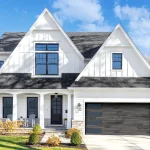The Impact of Technology on Managing Senior Housing Complexes More Effectively
Managing senior housing complexes has evolved dramatically in recent years, largely driven by advancements in technology. With aging populations increasing and the demand for high-quality care and comfort growing stronger, the senior housing management software industry is under pressure to operate more efficiently while still prioritizing resident well-being. Technology has become a key partner in meeting these demands, enabling property managers and caregivers to streamline operations, enhance communication, and deliver a higher standard of service.
One of the most impactful changes is the use of integrated management software specifically designed for senior living. These platforms bring together key aspects of daily operations—like maintenance tracking, billing, staffing schedules, and resident care coordination—into one centralized system. This consolidation not only reduces administrative errors but also helps staff stay informed and responsive. With real-time updates and access to accurate information, teams can make faster, smarter decisions, ultimately benefiting residents.
Digital tools have also improved resident care planning and documentation. Gone are the days of manual paper logs and delayed updates. Now, caregivers can use mobile devices or tablets to input vital information directly into secure systems during their rounds. This immediate data entry ensures more accurate records, better compliance with health standards, and quicker responses to changing health needs. In turn, residents receive more personalized care based on real-time insights.
Communication is another area where technology has created significant advancements. Internal messaging tools and staff dashboards have streamlined communication between departments, reducing delays in maintenance requests, medication updates, or schedule changes. For residents and their families, mobile apps and portals offer peace of mind. They can view activity calendars, dining menus, or even schedule virtual visits, keeping everyone more connected and engaged without overwhelming the facility’s staff.
Security and safety, always a top concern in senior living, have also benefited from modern systems. Surveillance cameras, access control, emergency call systems, and remote monitoring solutions are now more sophisticated and easier to manage through centralized platforms. With smart sensors and alert systems in place, staff can respond quickly to falls or emergencies—often before the situation escalates. These systems not only protect residents but also help build trust among their families.
Another important area is operational efficiency. Automated maintenance schedules, energy usage monitoring, and digital inventory systems help ensure that the physical environment of the complex remains in top condition. For administrators, this means fewer unplanned repairs and better cost control. It also allows staff to focus more on resident interaction rather than paperwork or manual coordination.
Training and onboarding have also been enhanced with online modules and digital tracking. New hires can be trained consistently and efficiently, ensuring they are well-prepared to provide quality service. Staff performance can be monitored over time, and additional resources or support can be provided as needed—helping retain skilled employees in a challenging labor market.
In summary, technology has transformed the way senior housing complexes are managed. It provides the tools needed to run efficient, responsive, and resident-focused communities. While the human element remains central to caregiving, technology is enabling those professionals to do their jobs better, faster, and with more confidence. As innovation continues, the future of senior housing management will only become more capable of meeting the needs of an aging population with compassion and precision.

















